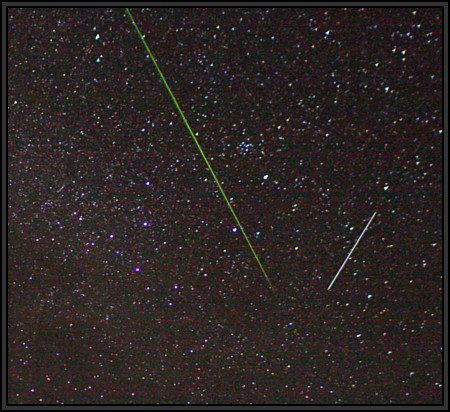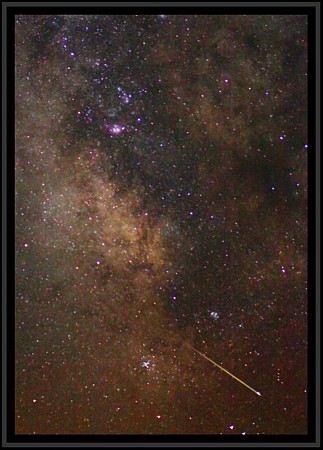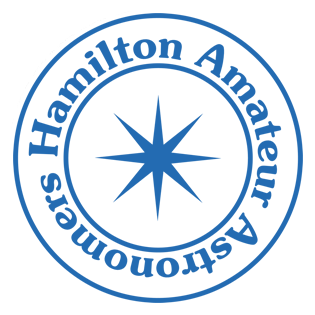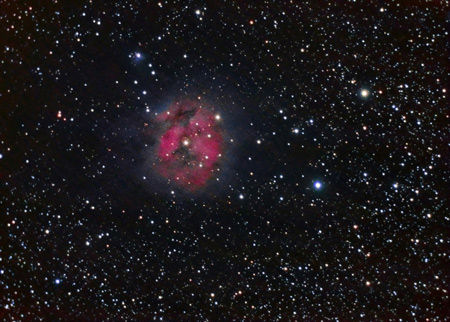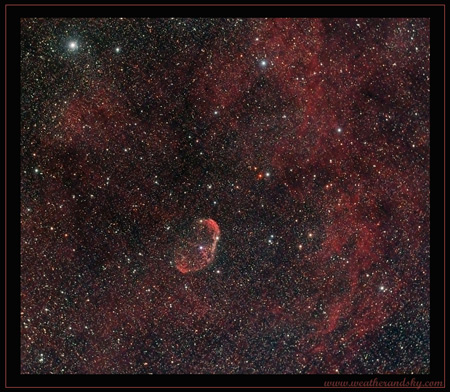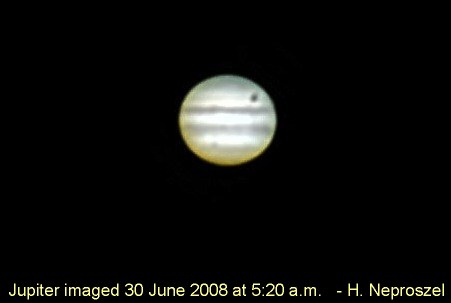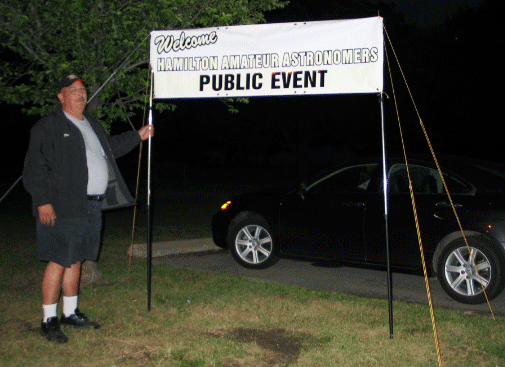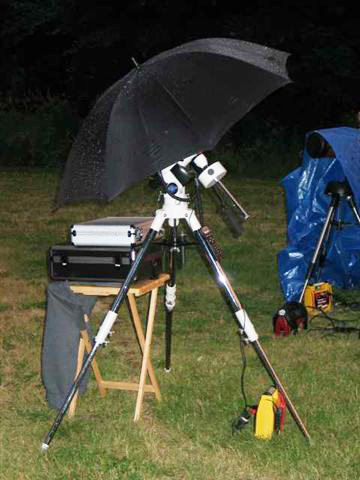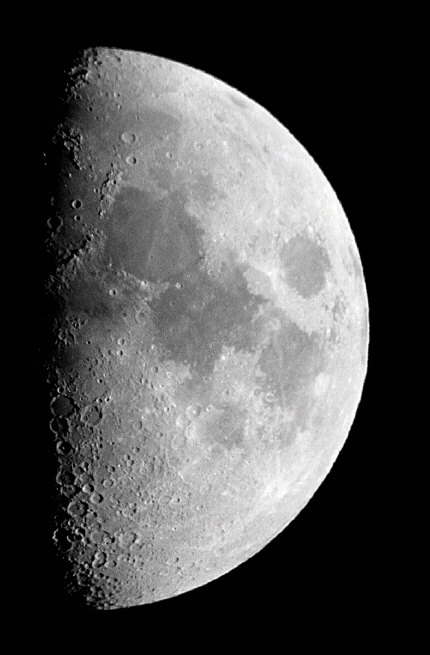With the dark of the moon approaching, Ed and I decided a week ago that we would head for CSSP this week. Little did we know that the first Saturday of August is the Woodmen’s conference, which would
result in us being kicked out of the park one day sooner than we expected (not to mention a bit of extra noise in the mornings). Ed got there Monday afternoon and had an outstanding clear night. I arrived on Tuesday afternoon, in time to set up for dusk.
It took about 2 hours to get the GWS and tent all constructed, aligned and ready.
At about 10 PM i strolled to the gate to close it, so that lost travelers would not drive through the park. I met up with 2 families that had come for the view, and were trying to find things in the sky. I showed them the north star, big dipper, and a few other constellations, as well as the Milky way, of course. I explained to them what makes this park and the area around it so special for astronomers. Then i invited them to come to the GWS and see things firsthand.
What followed was a tour of the reasons for going to cherry springs… clear views of Nebula, Galaxies, etc… I showed them M22, M11, M17, M51/M52 and M57. Also M13, although i could not find the propeller… i invited them to look for it.
They left happy at about 11 PM.
Later in the evening, I was able to quickly and easily fish up M69 to M78, but missing M68, I will be practicing this more than a few times till December. Finding M74 and M77 are something that needs to be practiced for the Maxi Messier Marathon, so it’s a good investment in that regard. I made sketches of the star fields for them, as they appear in my eyepiece view. M74 is very subtle, even from Cherry Springs. Picking it out of the twilight must be very difficult without a detailed idea of the star field.
Skies were clear at first, but eventually a bit of high haze moved in. By 2 AM the haze was gone and the stars were all out again. I continued my tour of the sky.
I packed up the eyepieces at about 4:30 AM as the thin crescent moon was rising and gathering haze was again veiling it in mist. A gentle wind was keeping the flies away, which was nice, and there was no dew.
Wednesday, we turned on the car radio and got a weather report. They predicted 18 hours of clouds and rain, starting just after lunch. I wrapped the GWS with a tarp, and Ed covered his 2 scopes.
We left them ready for use should the rain subside.
The rains came as a light drizzle, and I took the opportunity to have a nap. The Woodsmen were setting up for their annual festival on the weekend, and we would have to leave the park at noon on Thursday. I was glad i did not pack the GWS into the car, because eventually the rains stopped, and
the sky begain to clear. I configured my laptop to operate the camera remotely, and also helped Ed to do the same for his 300D.
Tiny spaces were starting to open between the clouds at about 6 PM, and the clouds had gone from a nondescript haze across the whole sky to textured fluffy overlapping clouds.
I was able to create a time-lapse sequence of the sky around the setting sun, with about 300 frames. I made the mistake of using a constant exposure time, and eventually the frames were all black, but it’s the thought that counts… The sky was 80% clear by the time the sun set…
In the evening there were about 20 official visitors to the park and Maxine was doing a sky tour for them. I brought my binoculars over so they could view the star field around the milky way, and a few other binocular objects.
Eventually the clouds returned, and the skies were pretty bleak from about midnight onwards, but I did get a chance to see the wonder of the skies several times in the clear intervals. Fog was blowing in from the surrounding valleys. I was done at about 1 AM.
We packed up and left the park by 11 AM on Thursday. It took about 2 hours to tear down and pack everything up. The woodsmen were in the process of erecting tall logs for the lumberjacks to climb and saw off.
Sounds like the festival would have been a sight too. It’s on today.
